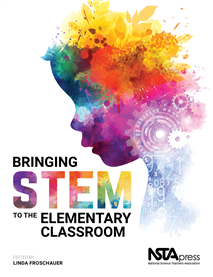All Book Chapters
Book Chapter
This problem focuses on how the body changes the materials of things we eat into our own tissue. How do animals and plants use food? Why do we not become what we eat? Students often wonder if the saying “you are what you eat” makes sense. In this...
Book Chapter
Problem-Based Learning in the Life Science Classroom, K–12 (Book Sample)
Problem-Based Learning in the Life Science Classroom, K–12 offers a great new way to ignite your creativity. Authors Tom McConnell, Joyce Parker, and Janet Eberhardt show you how to engage students with scenarios that represent real-world science ...
Book Chapter
How to Develop an Engineering Design Task
This chapter is a good introduction to the process of designing lessons. It provides a valuable way to start your journey through the many wonderful ideas shared in Bringing STEM to the Elementary Classroom, as well as generic strategies that you can...
Book Chapter
This chapter will assist you in identifying the misconceptions of students who are new to STEM. It provides a valuable way to start your journey through the many wonderful ideas shared in Bringing STEM to the Elementary Classroom, as well as generic ...
Book Chapter
In this chapter, through two different stories, students are introduced to the process—including the frustrations—of designing something to solve a problem. The experiences of the books’ characters are brought into the classroom by having stude...
Book Chapter
More Teaching Through Trade Books
This chapter presents two fiction trade books that can be used to inspire students to design and test various flying machines. It provides opportunities for students to engage in optimizing design solutions through testing and comparing flying machin...
Book Chapter
This chapter shares the seven overlapping and mutually reinforcing strategies teachers used that effectively supported children’s learning in physical science and engineering. Consistent implementation of these teaching strategies requires that pre...
Book Chapter
This chapter shares experiences introducing preschoolers and kindergarteners to engineering through an hour-long lesson about designing structures. The 5E lesson framework remains a useful tool within science education. It represents a way to situate...
Book Chapter
Can a Student Really Do What Engineers Do?
In this chapter, a science teacher educator, a water company informal educator, and a second-grade teacher develop and co-teach a three- to four-day instructional unit within the authentic context of water filtration. This unit was designed to suppor...
Book Chapter
A STEM activity is any activity that integrates the use of science, technology, engineering, and mathematics to solve a problem. This chapter presents a STEM unit that was completed over two weeks in a kindergarten classroom. The unit focused on the ...
Book Chapter
Inviting Engineering Into the Science Lab
This chapter presents examples of two lessons adapted from a second-grade program to incorporate the science and engineering practices into lab activities through the use of guided inquiry, rather than the structured-inquiry approach dictated in the ...
Book Chapter
In this activity, note the steps for redesign, and be open to following a design process, not a rigid the design process. Students may spend a long time exploring the properties of the materials before they begin making purposeful changes to refine t...
Book Chapter
Elephant Trunks and Dolphin Tails
This chapter focuses on how engineers help animals. After some time to brainstorm together, students come up with an idea that engineers may help veterinarians heal sick animals or zookeepers develop safe habitats. An engineering design challenge is ...
Book Chapter
This chapter shares two examples of “classic” science lessons adapted to teach science content through engineering design. It also provides some more general strategies for adapting science investigations to focus on engineering design. In the fi...
Book Chapter
In this activity, students transform STEM journals into E-books while integrating science, technology, and literacy. The chapter brings forward the idea of integrating iPads into the classroom. With the students’ previous experience with Engineerin...



